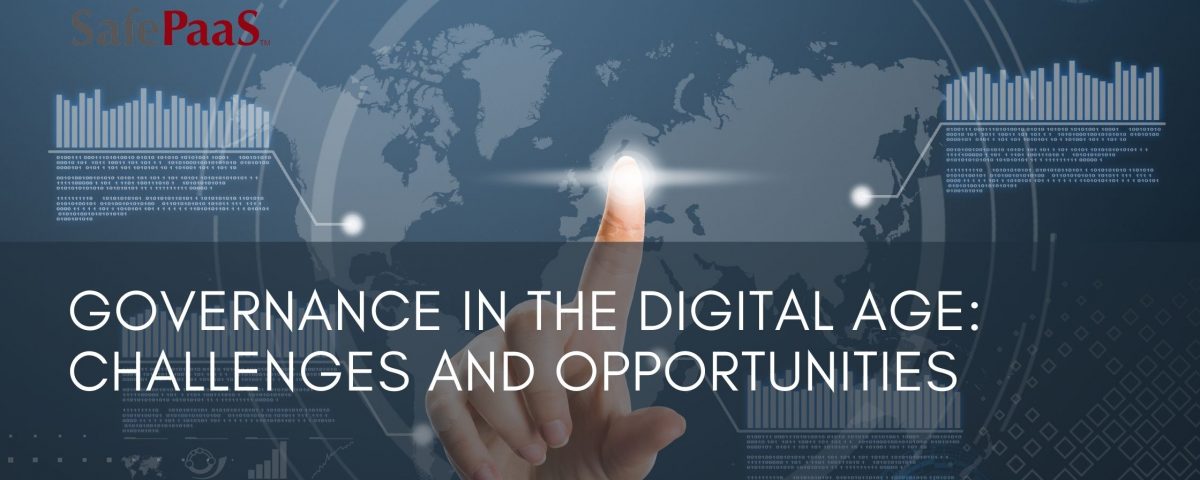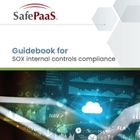Governance in the digital age


Governance in the digital age: challenges and opportunities
Effective corporate governance is the core of long-term, sustainable company growth. However, corporate governance requirements are becoming increasingly burdensome, with regulators worldwide placing greater emphasis on the impact businesses have on their employees, customers, and suppliers as opposed to focusing solely on shareholders.
Despite the importance of corporate governance, most companies rely on outdated processes to manage their operations. Relying on outdated methods and processes to govern the organization can lead to operational setbacks, abuses of power, and messy disclosures.
Digital transformation should include a corporate governance transformation to minimize risks; by implementing the right technology solutions, relevant policies and procedures that can be rapidly embedded and continuously monitored, allowing organizations to identify and address any corporate governance deficiencies quickly.
What is corporate governance, and what are its benefits?
The aim of corporate governance is effective leadership. The board of Directors carries this objective out by creating processes, systems, and controls to encourage appropriate behaviors that ensure the organization's sustainability.
Benefits of governance
Improved corporate governance can significantly boost productivity and growth and reduce costs. The benefits of governance include:
Improved decision-making: There is an undeniable link between an organization's governance and its ability to make better decisions associated with performance. Good governance ensures quick access to data and good communication among stakeholders, leading to better outcomes. Strong governance also enables fast and accurate prioritization of activities and efforts. Improved decision-making is especially beneficial in supporting the organization's sustainability during harsh economic conditions.
Enhanced strategic planning: With rapid access to data and good communication with management, boards can formulate successful strategies. This includes a more efficient allocation of resources and capital.
Strengthened internal controls: Implementing governance across the organization also ensures an effective control environment. Moreover, the board is better positioned to take action when the controls signal non-compliance.
Reduced cost of capital: Sound governance practices can reduce a company's borrowing costs. Stable, reliable organizations can mitigate potential risks and therefore have access to borrow at a lower interest rate than competitors with weak corporate governance.
Challenges for governance in the digital age
Data breaches - A data breach is any security incident in which unauthorized persons gain access to sensitive or confidential information, including personal data (Social Security numbers and banking and healthcare data) or corporate data (customer records, intellectual property, or financial information). Data breaches and cyber attacks are on the rise. The affected organizations will spend millions on remediation efforts and dealing with the damage to their reputation.
IGA solutions are proactive and reduce the vulnerability of sensitive data by strictly limiting and guarding access to resources. Data breaches are most commonly caused by:
- Careless employees
- Malicious insiders
- Application vulnerabilities
How to conquer this challenge - Identity governance administration (IGA)
The primary purpose of IGA is managing risks and ensuring compliance in a consistent, efficient, and effective manner. Governance goes beyond essential compliance and access control to provide a method for overseeing and implementing the tactical aspects of IAM, including:
- Establishing user identity and access certification
- Authenticating users
- Controlling access to information, data, and applications
- Monitoring and auditing user activities
IGA solutions ensure that access to sensitive information is tightly controlled. IGA solutions also enable organizations to prove they are taking action to protect data and security. Organizations can receive audit requests at any time. An effective IGA solution makes the required periodic review and access certification easy and effective, with reporting capabilities that meet applicable government and industry regulations.
However, not all IGA solutions provide the level of governance needed to satisfy your auditors. To truly reap the benefits of robust governance, a policy-based solution with fine-grained and integration capabilities is the only solution that will address all of your IGA concerns allowing for enterprise-wide visibility and satisfying compliance regulations and auditors.
Insider threats: The Cyber and Infrastructure Security Agency (CISA) defines an insider threat as someone who uses their authorized access, intentionally or unintentionally, to harm the organization's mission, resources, personnel, facilities, information, equipment, networks, or systems. Insider threats are most commonly caused by the following:
- Users with excessive access privileges
- Increase in the number of devices with access to sensitive data
- Increasingly complex and disconnected IT ecosystems
Each year insider threats account for the loss of mission-critical data, downtime, lost productivity, and reputational damage. Organizations must invest in a comprehensive security solution to help with real-time detection and prevention.
According to The Ponemon Institute's report, "2022 Ponemon Institute Cost of Insider Threats: Global Report," the average cost of an insider threat is $15 million.
Insider attacks are becoming common and cost organizations billions annually. Organizations can take an active part in preventing insider attacks. By monitoring for threats and providing security teams with innovative security solutions, organizations can leverage a layered security solution that positions the organization for success.
Opportunities for governance in the digital age
As organizations adapt to digital transformation, governance has increased in importance. The cloud offers improved agility, flexibility, and cost savings. As digital transformation continues taking shape, the adoption of the cloud presents many operational efficiencies, but digital transformation also brings new opportunities to improve corporate governance.
Technology-focused - IT is essential for carrying out the organization's strategy. IT governance ensures that IT investment follows business standards and mitigates IT risks.
According to Blake Curtis, CISA, ineffective governance substantially impacts "business alignment and risk management. Misalignment can result in improper identification of sensitive data, critical services, and substandard security controls. Additionally, poor alignment between the enterprise and IT weakens communication and priorities, resulting in poor allocation of resources and a lack of transparency in actual risk reduction."
Weak IT governance processes result in poor management of IT investments. In contrast, strong IT governance can boost IT investment value by optimizing risk management practices to support the organization's objectives.
By adopting IT governance, companies can create a culture of security awareness. Identity and access governance (IGA) solutions are one of the most powerful data and system security technologies. By using IGA, companies can help maintain ITGC integrity because it can prevent access and data from being altered to commit fraud. IGA can also be an effective way to protect internal data by meeting compliance requirements. Policy-based IGA solutions embed your ITGCs into your processes, ensuring that your policies and procedures are always aligned and executed properly, preventing fraud, error, and non-compliance.
Optimized process governance - Organizations can manage compliance smarter with the help of modern governance solutions, ensuring that regulatory changes and risk remediations are implemented in days rather than months. These solutions help organizations manage, automate and optimize business processes and workflows with actionable insight into business processes based on the organization's guidelines established by leadership and mandated by regulators.
A controls monitoring solution can provide information on how well processes operate over a selected period, enabling your organization to ensure that operating, financial, and compliance objectives are met. Process improvements can be made by enforcing consistent application setup and operating standards with control monitoring solutions.
Digitally infused - turning data into action - Boards can harness the power of technology to glimpse into the future of intelligent risk and compliance solutions. Modern governance solutions are based on predictive analytics and deliver actionable information to business managers leveraging the existing reporting infrastructure, such as Business Intelligence applications and mobile devices.
Leadership can discover patterns in all types of structured and unstructured enterprise data, and use this insight to improve the bottom line, significantly reduce cash leakage and post-audit recovery costs, improve revenue recognition timing, safeguard the integrity of financial statements, lower the cost of internal and external audits, increase visibility into the controls environment and mitigate exposure to fraud.
Compliance and risk management - Digital transformation is changing regulatory compliance and risk management practices. For example, compliance with new data privacy requirements is a significant issue. Identity governance access solutions provide advanced policy-based access controls allowing organizations to control who is given access to what data and when. Policy-based access controls adapt efficiently in real-time to control and manage access across all your applications to maintain the security of the organization's data. Compliance enables organizations to:
- Protect client and employee information
- Manage risks to data security effectively
- Achieve compliance with regulations such as SOX and GDPR, and
- Protect the company's brand image
Corporate governance is the foundation of any organization. Addressing the challenges and leveraging the opportunities will be critical factors for corporate governance in helping organizations thrive.
Implementing solid governance as part of an organization's digital transformation strategy will be critical, as it will help position the company for future growth. Without a proper foundation, businesses risk failure. Corporate governance in the digital age has transformed and requires digital solutions to deliver its objectives.
Want to learn how SafePaaS can bring your governance into the digital age?
Recommended Resources

SOX Internal Controls Compliance
The Sarbanes-Oxley Act (SOX) has been in place since 2002, and confusion remains about what exactly SOX controls are, how they differ from SOXIT controls, and SOX compliance. This guidebook will clarify the confusion surrounding SOX internal controls and achieving compliance for your SOX audit.

Advanced Analytics
Access Analytics is a key component of an enterprise access governance solution as it can improve the effectiveness of controls and provide real-time insight to mitigate emerging threats. SafePaaS customers use access analytics in many ways and rely on results to safeguard their business against cyber security risks and insider threats from access policy violations.

Policy-based Identity Governance
Many organizations grapple with IGA processes, like creating and managing roles, assigning and reviewing access entitlements, and handling access requests. The primary cause is that organizations follow the wrong approach to IGA, particularly around creating and managing roles.

